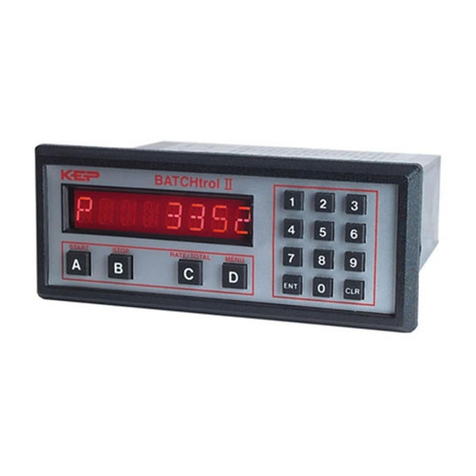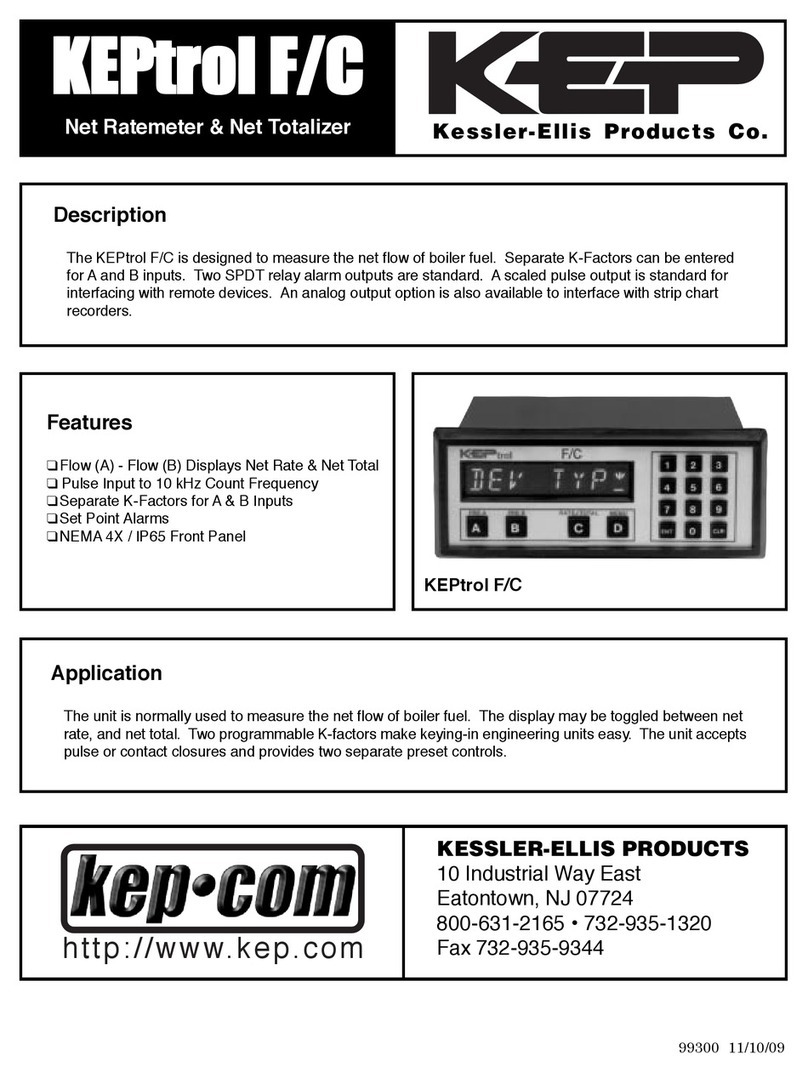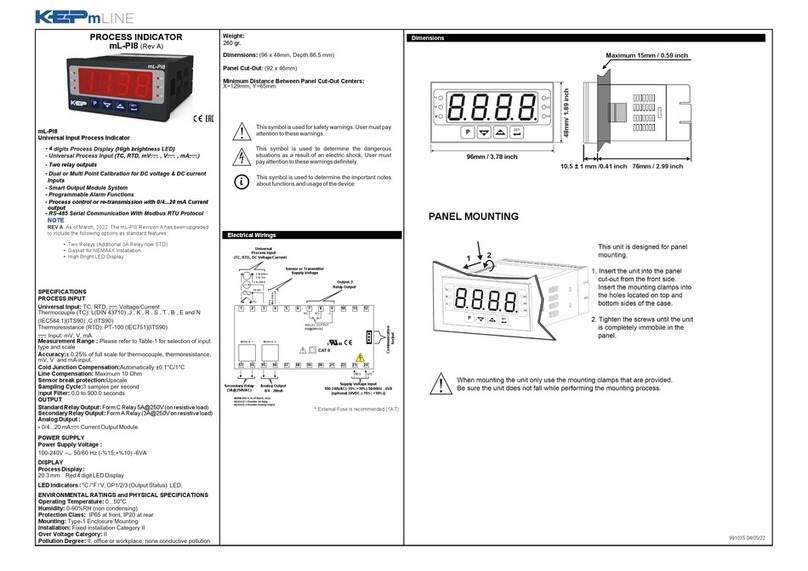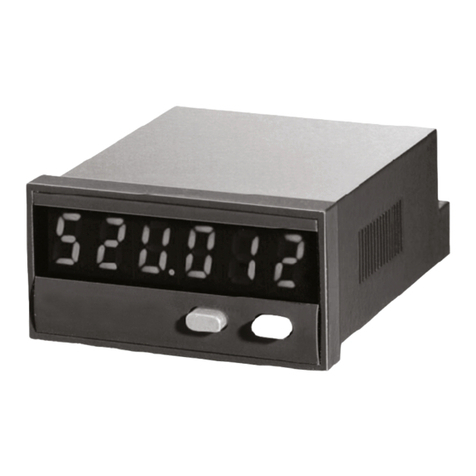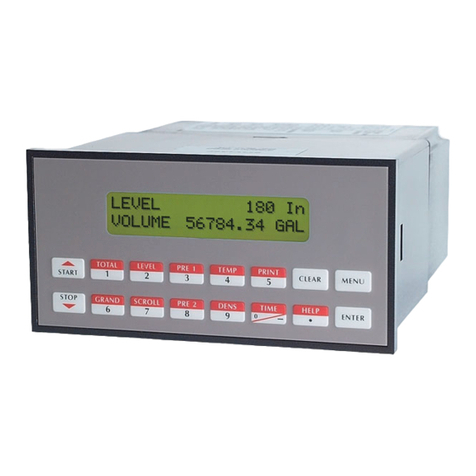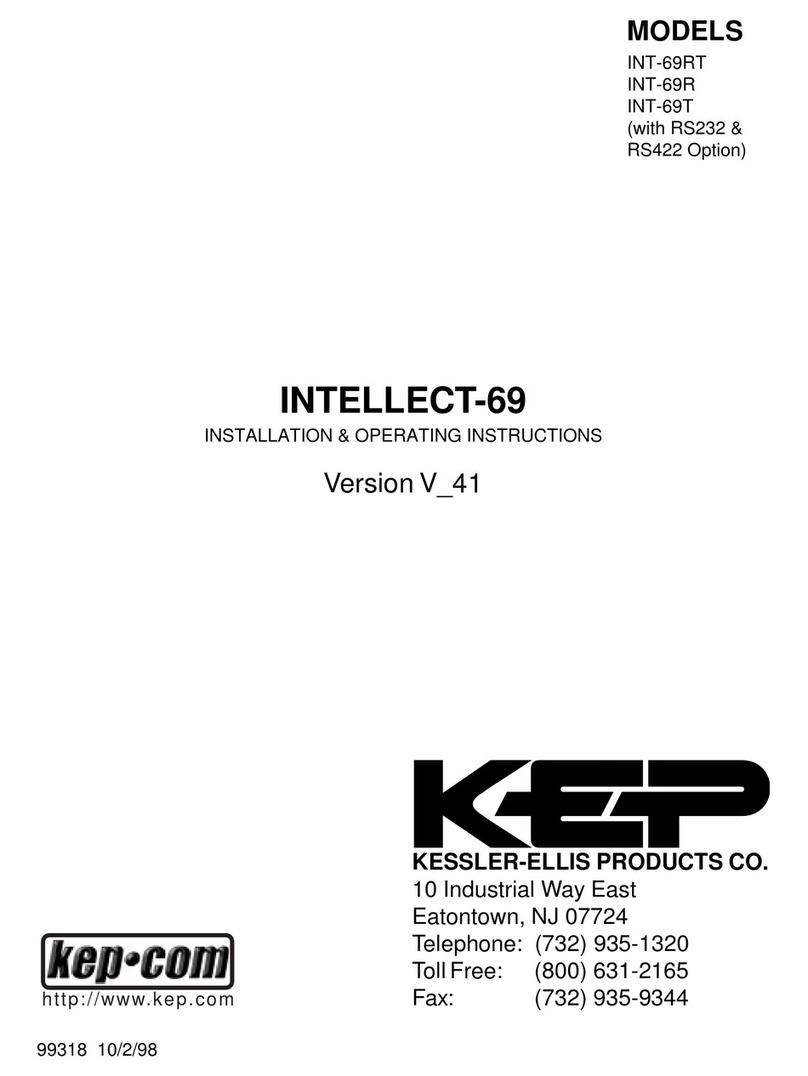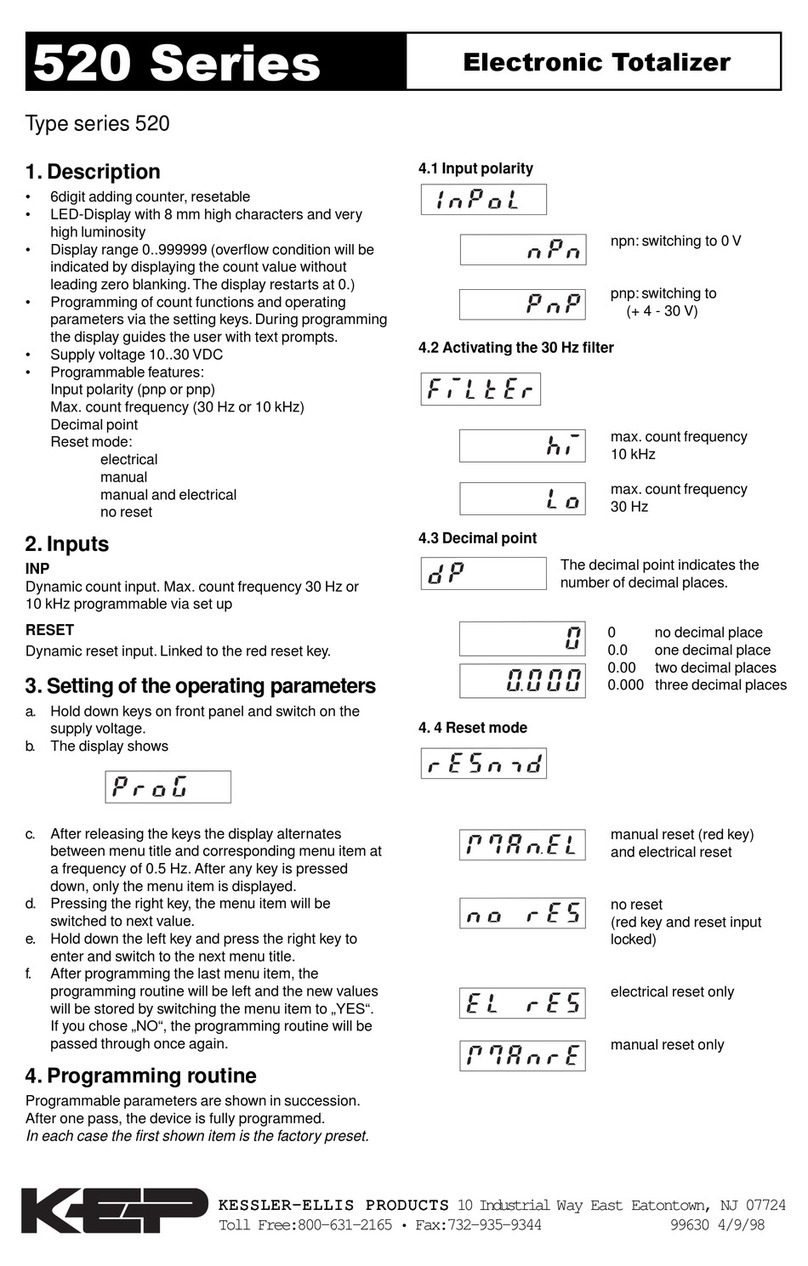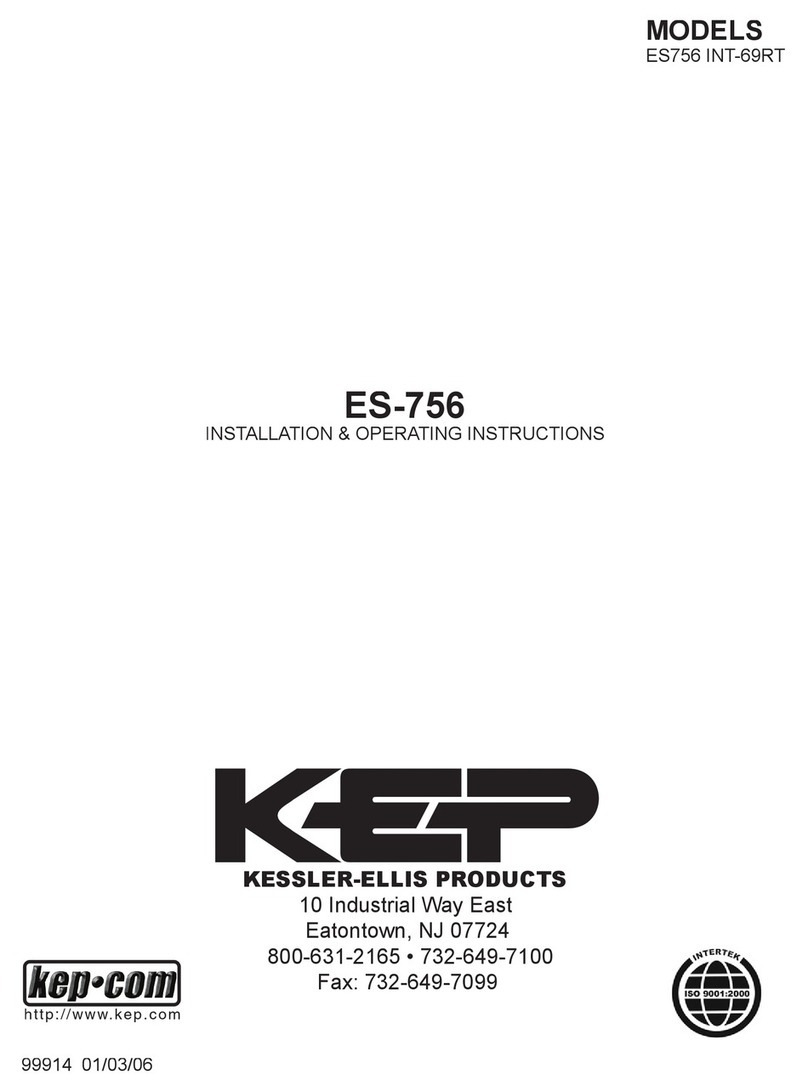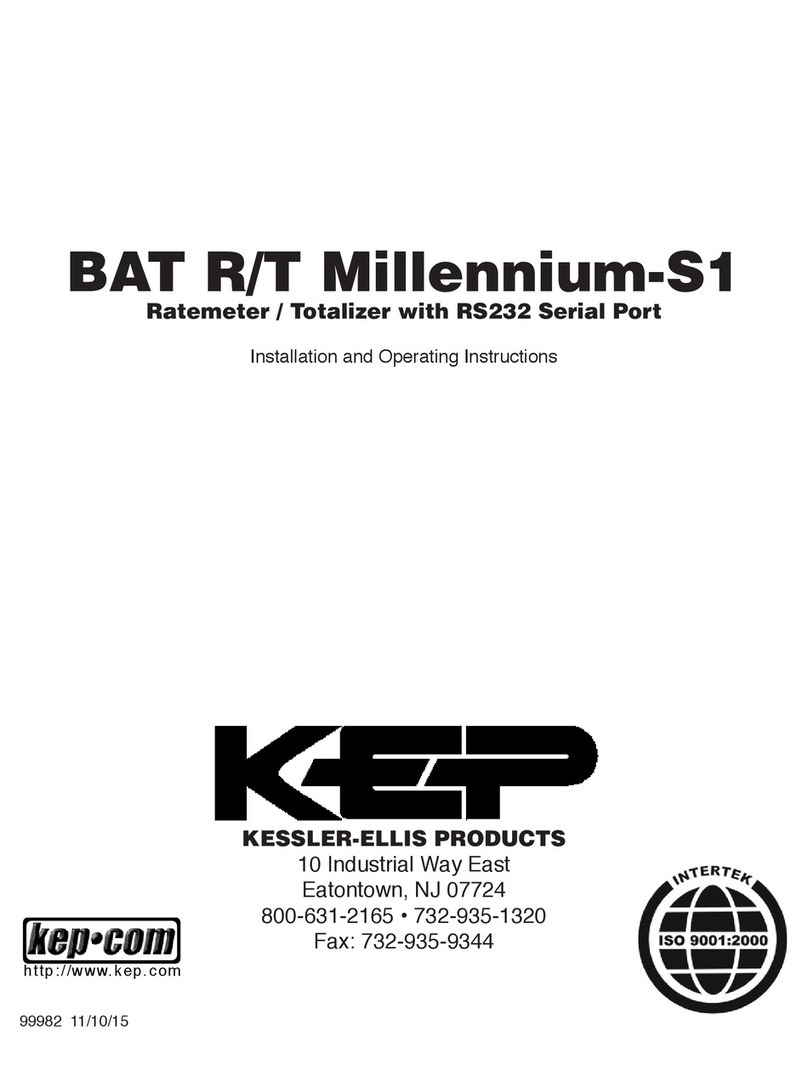
The Main menu consists of the following steps:
Defi ne list of parameters used, Confi gure Inputs, Setup Coun-
ters, Setup Ratemeters, Setup Relays / O.C., Setup Security,
Setup 4-20mA Output, Setup Comm Port, Defi ne reset options
and Back to RUN mode (or Exit programming). The PROG key
allows scrolling through these steps. All these steps are given
Defi ne list of parameters used:
The unit is capable of showing nine different parameters. The
parameters are the readings
gives after a pulse input is
RTP gives after a pulse input is RTP
given to it. The parameter names are fi xed in
The parameter names in Default Mode are:
Rate A, Rate B, Rate A+B, Rate A-B, Total A, Total B, Total
A+B, Total A-B and Gr. Total.
The parameter names in Message Mode are user defi nable.
The length of these user defi ned names can be upto nine char-
acters. Valid characters are SPACE, A-Z, a-z, 0-9, /.
The menu also enables the user to defi ne the sequence in
which the parameters are to be viewed at Run time and the no.
of digits after the decimal point (0-3). It also enables the user to
program the message for each parameter.
The unit has fi ve inputs, two of which are pulse inputs and the
remaining three are control inputs. The two pulse inputs are
. They can programmed to be either linear
For linear input a six digit multiplier scaling factor has to be
entered (.00001 to 999999). This scaling factor is constant for a
linear input. For a non-linear input the scaling factor is different
at different frequencies so the points (Frequency, Factor) have
to be entered. The unit supports a maximum of sixteen such
Set the average K-Factor to a suitable value before en-
tering the linearization table. This average K-Factor will
be used under the following special cases for process-
ing of pulse information :
1. When in the setup menus
2. When below the linearization table limit
3. When above the linearization table limit
Input B is normally a separate input with separate scaling. It
can also be programmed as a control input for up counting or
down counting of Total A. A High on Input B makes Total A
count up and a low on Input B makes Total A count down.
The remaining three inputs C, D and E are control inputs and
can be programmed to control actions such as start counting,
reset counting, stop counting, freeze display, lock unit and print
When freeze display is activated (or a pulse is applied to the
control input which is confi gured to freeze display) the unit stops
refreshing the display. The unit continues to run in the back-
has fi ve counting parameters:
RTP has fi ve counting parameters: RTP
Parameter Default name Function
Each counter can be reset to zero or disabled. The Grand Total
is programmable and can be set to follow any of the remaining
The parameters Rate A, Rate B, Rate A + B, Rate A - B can be
programmed to be rate/seconds, rate/minutes, rate/hours. The
user can use custom scaling if the units are different than RPS,
RPH, RPM e.g. rate/day, so that the rates can be converted to
engineering units. The custom scaling factor can be of 6 digits
ranging from 0.00001 to 999999. The normalizing factor rang-
ing from 0.1 to 99.9 can be programmed.
(Old Data x “Normalizing Factor” + New Data)
(Old Data x “Normalizing Factor” + New Data)
(“Normalizing Factor” + 1)
For rate display, a time of up to 25 seconds can also be applied.
The unit has two control outputs, N.O. Relay A or Open Col-
lector A and N.O. Relay B or Open Collector B. The control
outputs can be programmed to track any of the nine parameters
and can also be programmed to operate in
In Timed mode (count) a low preset value or a high preset
value is entered then the
control output will energize whenever the value of the param-
eter, which the control output is tracking goes
value is entered then the control output
will energize whenever the value of the parameter, which the
control output is tracking goes
the preset value. In Timed
mode (count) after low preset or high preset have been entered
unit will ask for reset time (the time duration that the control out-
put will remain energized). Set time from 0.1 to 99.9 sec. with
auto reset of counter. If set to 00.0, count continues and output
is latched until reset by external or front panel reset.
In Hysterisis mode (rate)
the high preset and low preset
for the Hysterisis have to be entered. The control relay will acti-
vate when the rate parameter is
preset. The relay will remain energized until the rate parameter
Parameter Default name Function
Parameter Default name Function
